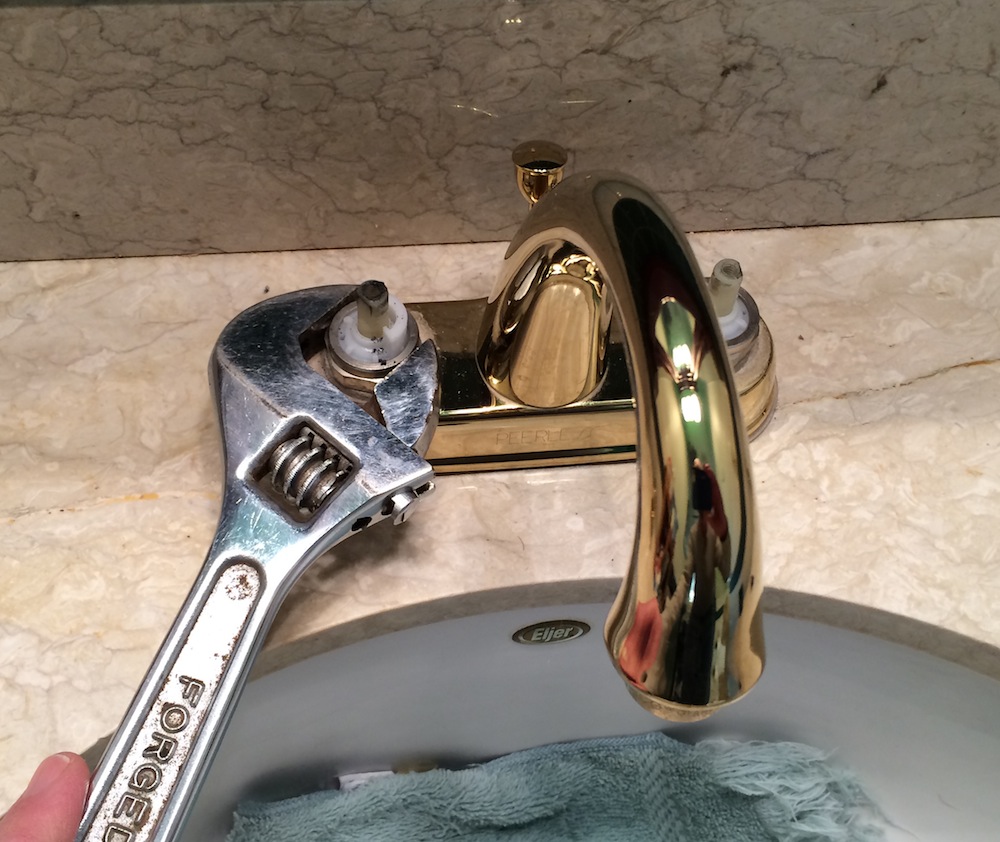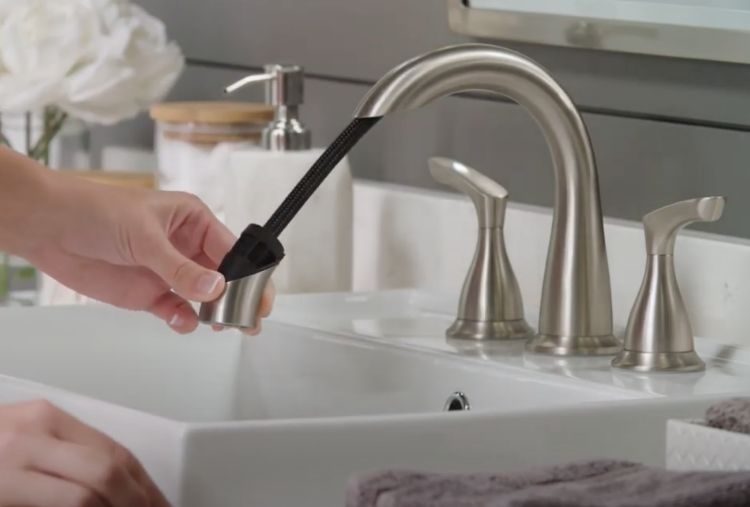Just about everyone maintains his or her own piece of advice in relation to Should I Repair or Replace a Leaky Faucet?.

Trickling faucets could seem like a minor trouble, yet their influence surpasses simply the inconvenience of the audio. From drainage to incurring unnecessary economic expenses and health threats, neglecting a trickling tap can result in numerous repercussions. In this write-up, we'll explore why it's crucial to resolve this common home concern quickly and properly.
Wastage of Water
Ecological Effect
Trickling taps contribute substantially to water wastefulness. According to the Environmental Protection Agency (EPA), a single tap trickling at one drip per second can throw away more than 3,000 gallons of water per year. This not only stress water resources but also impacts ecological communities and wild animals depending on them.
Step-by-Step Overview to Dealing With a Dripping Tap
Devices Needed
Before attempting to repair a dripping tap, gather the necessary devices, consisting of a flexible wrench, screwdrivers, replacement components (such as washing machines or cartridges), and plumber's tape.
Typical Faucet Issues and Their Solutions
Recognize the kind of faucet and the details problem creating the drip. Common troubles consist of damaged washers, corroded valve seats, or defective O-rings. Describe maker guidelines or on-line tutorials for detailed advice on repairs.
Financial Costs
Increased Water Bills
Past the environmental impact, dripping faucets can blow up water costs considerably. The gathered waste in time translates into greater utility expenses, which can have been stayed clear of with timely fixings.
Prospective Home Damage
In addition, extended dripping can cause damage to components and surface areas surrounding the tap. Water accumulation can create discoloration, rust, and even structural issues if left unattended, resulting in added fixing expenses.
Health Problems
Mold and Mildew Development
The continuous visibility of dampness from a dripping faucet develops a suitable setting for mold and mold growth. These fungi not just compromise interior air quality however also present health and wellness threats, especially for people with breathing problems or allergic reactions.
Waterborne Illness
Stagnant water in dripping taps can come to be a breeding place for bacteria and various other virus, increasing the threat of waterborne diseases. Contaminants such as Legionella germs flourish in stagnant water, possibly bring about severe diseases when ingested or inhaled.
Do it yourself vs. Professional Fixing
Advantages and disadvantages of DIY Repair
While some might try to fix a dripping tap themselves, DIY repair work feature their own collection of obstacles. Without appropriate expertise and tools, do it yourself efforts can intensify the concern or lead to insufficient repair work, lengthening the trouble.
Benefits of Employing an Expert Plumber
Working with a professional plumber guarantees that the underlying cause of the dripping faucet is dealt with efficiently. Plumbing professionals possess the competence and devices to identify and repair faucet issues efficiently, saving time and minimizing the risk of further damage.
Ecological Obligation
Specific Payment to Conservation
Taking obligation for taking care of leaking faucets lines up with broader initiatives toward water conservation and ecological sustainability. Every individual's activities collectively make a considerable impact on maintaining precious resources.
Sustainable Living Practices
By prioritizing punctual repairs and adopting water-saving behaviors, individuals add to lasting living practices that profit both present and future generations.
Preventive Measures
Normal Upkeep Tips
To prevent leaking faucets, do routine upkeep such as cleaning aerators, inspecting for leaks, and changing worn-out components promptly. Furthermore, consider setting up water-saving tools or upgrading to much more reliable fixtures.
Significance of Prompt Fixes
Dealing with leaking taps as quickly as they're noticed stops additional water wastefulness and possible damages, inevitably saving both water and cash in the long run.
Influence On Residential Or Commercial Property Value
Understanding of Well-Maintained Residential Property
Preserving a home in good condition, including attending to maintenance issues like dripping taps, improves its perceived worth and value among prospective buyers or lessees.
Influence on Resale Value
Features with well-kept plumbing fixtures, consisting of taps, command higher resale worths in the real estate market. Resolving dripping taps can add to a positive impact during residential property evaluations and settlements.
Final thought
Addressing a leaking tap surpasses mere benefit; it's a necessary action toward saving water, reducing monetary expenses, and guarding health and home. Whether with DIY fixings or expert help, taking action to fix dripping taps is a small yet impactful way to promote responsible stewardship of resources and add to a much healthier, much more sustainable future.
Most Common Reasons for a Leaky Faucet and How to Stop the Drip
Whether it’s your kitchen faucet leaking or a bathroom faucet leaking, one leaky faucet can waste anywhere from three to 30 gallons of water every single day. If the constant drip-drip-drip doesn’t get your attention, your water bill will. The good news is that, by following a few simple steps, chances are pretty good you can fix the problem yourself.
Why is it dripping?
Before you start taking things apart, let’s break down some of the most common causes of a leaky faucet.
Bad O-ring.
A cartridge is a valve that controls the flow of water into the faucet spout. On cartridge faucets there’s an O-ring—the little disc attached to the stem screw that holds the faucet handle in place. If it’s loose or worn-out, it can cause your sink handle to leak. Of course, the cartridge itself could be worn out. If that’s the case, make sure you replace it with the exact same kind.
Corroded valve seat.
The valve seat connects the faucet and the spout. If the leak seems to be coming from the spout, it might be because a buildup of water sediment has corroded the valve seat.
Worn-out washers or seals.
A leaky spout could be caused by a bad washer that rests against the valve seat. It’s just a matter of time before friction takes its toll. It could also be the wrong size washer or one that’s been installed incorrectly. Water sediments can also corrode inlet and outlet seals.
Water pressure.
If the faucet only drips now and then, or when you turn the handles a certain way, you should probably check your home’s water pressure.
Loose or broken parts.
The adjusting ring and packing nuts in the stream screw can become loose over time, causing your sink handle to leak. Try tightening or replacing the packing nut. If the leak is coming from the pipes underneath the sink, you probably have a broken pipe or fitting. If that’s the case, you should definitely call a plumber.
Know your faucet.
Faucets come in a variety of types. Each one has its own assembly—and its own possible causes of leaks. Learning about the four most common kinds of faucets will help you know how to take them apart and make any repairs.
How to stop a leaky faucet
Fixing that leaky faucet doesn’t have to take a lot of time, money, or expertise. It’s usually a simple matter of replacing a worn-out washer or gasket, a loose O ring, or another part. Chances are really good you can do this yourself if you follow these simple steps.
Shut off the water.
Before you tackle the faucet, cut off the water supply to the sink. There should be one valve for hot and one for cold. Hand-turn them clockwise with your hands till they close. If there are no valves under the sink, head to the basement and shut off the main water supply to the house. Then turn on the faucet until it empties out the water that’s still in the line and you’re ready to start. It’s a good idea to cover the sink drain with a plug or a rag so you don’t lose any small pieces and parts while you’re working.

I discovered that blog entry on Leaky Faucets: Why They Happen & What to Do About Them when doing a search on the internet. Do you know about another person who is interested in the niche? Why not share it. Many thanks for taking the time to read it.